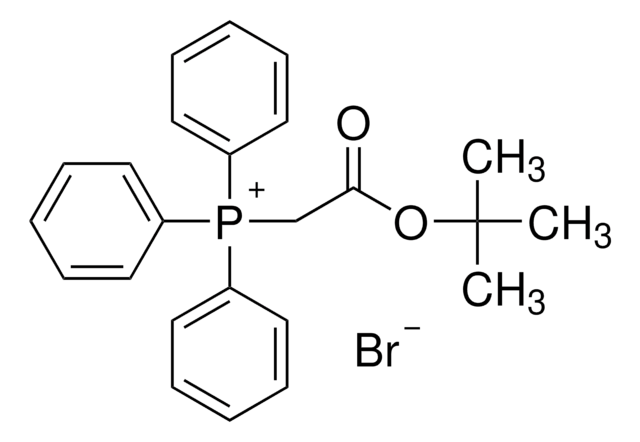20423
(tert-Butoxycarbonylmethyl)triphenylphosphonium chloride
≥98.0%
About This Item
Recommended Products
Assay
≥98.0%
form
solid
reaction suitability
reaction type: C-C Bond Formation
SMILES string
[Cl-].CC(C)(C)OC(=O)C[P+](c1ccccc1)(c2ccccc2)c3ccccc3
InChI
1S/C24H26O2P.ClH/c1-24(2,3)26-23(25)19-27(20-13-7-4-8-14-20,21-15-9-5-10-16-21)22-17-11-6-12-18-22;/h4-18H,19H2,1-3H3;1H/q+1;/p-1
InChI key
PWEGQXPODNSKMU-UHFFFAOYSA-M
Application
- Stereoselective preparation of (arylamino)quinazoline derivatives bearing tethered acrylamide moieties as inhibitors of epidermal growth factor receptor and histone deacetylase
- Thermal decomposition reactions
Other Notes
Signal Word
Warning
Hazard Statements
Precautionary Statements
Hazard Classifications
Eye Irrit. 2 - Skin Irrit. 2 - STOT SE 3
Target Organs
Respiratory system
Storage Class Code
11 - Combustible Solids
WGK
WGK 3
Flash Point(F)
Not applicable
Flash Point(C)
Not applicable
Personal Protective Equipment
Certificates of Analysis (COA)
Search for Certificates of Analysis (COA) by entering the products Lot/Batch Number. Lot and Batch Numbers can be found on a product’s label following the words ‘Lot’ or ‘Batch’.
Already Own This Product?
Find documentation for the products that you have recently purchased in the Document Library.
Our team of scientists has experience in all areas of research including Life Science, Material Science, Chemical Synthesis, Chromatography, Analytical and many others.
Contact Technical Service








